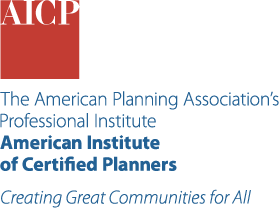Uncovering JAPA
A Community-Created Rubric for Heat Planning

Heat waves are the deadliest natural hazard in the United States. Due to climate change and urbanization, heat waves are expected to become more frequent and extreme.
This will cause a cascade of community problems, exacerbating historical environmental injustices. Planners can help the community to plan for the nuanced and subjective experience of extreme heat.
In "HeatReady Neighborhoods: A Planning Rubric for Extreme Heat" (Journal of the American Planning Association, Vol. 91, No. 2), Melissa Guardaro, Augie Gastelum, Ryan Winkle, Mary Munoz Encinas, Jennifer Vanos, Sarah Bassett, and David Hondula present a HeatReady Neighborhoods planning rubric, using Phoenix, Arizona, as a model for the equitable co-development of community and academic knowledge.
HeatReady Neighborhoods Rubric
To determine what makes a neighborhood ready for extreme heat, the authors turned to community voices. They did so through an iterative and layered process involving semi-structured interviews with community leaders and anonymous surveys.
The community partners brought knowledge of the place and an understanding of resident families. The academic partner highlighted the latest evidence-based approaches to understanding and tackling extreme heat. Both partners co-designed the interview template, survey questions, and the moderator guide for the focus groups.
The authors relied on the Delphi method, a consensus-building methodology that helps identify shared views.
Agreed-upon concepts were added to the rubric and removed from the survey. Meanwhile, statements with disagreements were modified and returned to surveying until the majority of respondents agreed. Some statements were eliminated because consensus was not reached after three rounds.
Those agreed-upon survey statements were then reviewed by focus groups. The focus groups offered thoughts on barriers to implementation and additional needs to execute a HeatReady Neighborhoods plan.
HeatReady or Not?
The HeatReady Neighborhoods planning rubric is a comprehensive list of possible interventions to support overall health during heat events. The rubric serves as a modular template for developing context-specific evaluations of heat readiness in communities elsewhere.
Its purpose is to help planners address specific community needs by optimizing the existing social, physical, and natural assets. The rubric is built from an understanding of the cultural history of the neighborhood, its current socioeconomic composition, and current barriers to providing cooling for all residents.
This contrasts with many heat action plans that overlook populations impacted by social inequality. Already disadvantaged, these populations suffer more extensively from extreme heat. The HeatReady Neighborhoods outline is a thorough process for centering and operating from a place of equity and inclusion, with involvement from multiple community players.

Figure 1: HeatReady Neighborhood feedback loop in two phases: cultural competency review (Phase 1) and centering ethics (Phase 2). Before actual planning can start in Phase 1, it is essential to understand the neighborhood fabric. In Phase 2, equity and inclusion are the lens by which all the other activities are managed.
The authors acknowledge the complex arrangements of intersectional identities and scales, from the individual experience of a hot bedroom to the global scale of planetary warming. To remain centered throughout these levels of analysis, the authors focused their research on two questions:
- Given that extreme heat is an intersectional issue, how can extreme heat be planned for and managed at the hyperlocal neighborhood scale to reflect a community's unique landscape-level characteristics, cultural identity, demographic composition, and adaptive capacity?
- What strategies for heat mitigation are most appropriate for building and supporting community-scale resilience to extreme heat, especially in under-resourced neighborhoods?
Empowering Communities to Lead Heat Resilience Efforts
The HeatReady Neighborhoods rubric emphasizes the importance of community engagement and equity for addressing extreme heat at the hyperlocal neighborhood level. The authors propose activating current residents to lead HeatReady Neighborhood teams.
These teams would work with institutional partners and dedicated city personnel to act as advisors. They encourage each neighborhood to identify or train a certified HeatReady Navigator, who would function like a community health worker with local knowledge. The framework proposes an exchange of resources and information between community members, city liaisons, and public health departments.
The authors urge planners to optimize community assets, center ethics, and collaborate across sectors to implement strong and adaptive heat action plans. Integrating the HeatReady Neighborhoods rubric into mainstream planning can help address historical power asymmetries through sustainable climate change adaptation strategies.
The authors argue that the HeatReady Neighborhoods approach is crucial in ensuring that planning practices are inclusive, effective, and responsive to the needs of all community members, especially those most vulnerable to the evolving effects of climate change.
KEY TAKEAWAYS
- Prioritize hyperlocal, neighborhood-scale needs.
- Co-create knowledge with residents.
- Consider historical inequities and underinvestment of infrastructure.
- Optimize the social, physical, and natural assets of their communities.
- Collaborate across sectors to identify, mitigate, and build adaptation strategies.
Top image: Photo by iStock/Getty Images Plus
ABOUT THE AUTHOR


